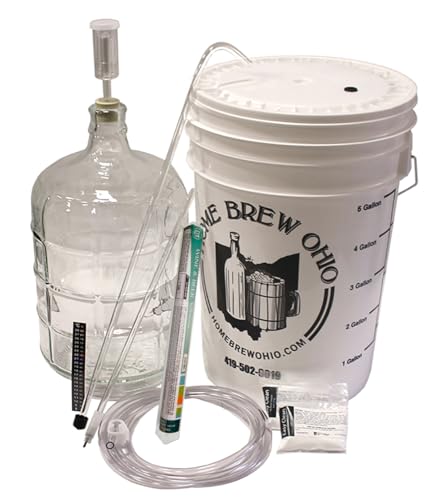B
briggsy
Guest
hi everyone,
im new here and recently started my first two batches of fruit wine: raspberry, and rhubarb. i kind of used a bastard child of two recipes, one in wild fermentation by sandor katz and one in garey's joy of home winekmaking.
my questions is about my raspberry wine. i let it ferment in its primary for 17 days and i put it in the secondary (a carboy) last night and tasted it. its already very dry and doesnt taste much like raspberries. im pretty disappointed. here's what i did: for 3 gallons i used 9 pounds of fresh raspberries, to which i added the boiling water and let sit 24 hours. the next day i added tannin, acid blend, pectic enzyme, campden tablets, montrachet yeast. i let that sit a few days till i added white sugar and yeast nutrient (which i didnt have at first). im not sure about the exact amount of sugar i used because im at work, but i followed the amounts stated in the recipes. then i stirred it a few times daily for the 17 days. i left the fruit in there the whole time, contrary to the recipes, but based on a recommendation from the homebrew shop.
if anyone can see anything i clearly did wrong, please let me know. also, i know wine has to age and we have to be patient, but is it a problem that the wine is already so dry? i was under the impression that it would be sweet at first, then dry as it aged.
i have another question about my rhubarb wine. i did a similar procedure as the one outlined above. the wine is very pink and very cloudy. i used 4 parts white sugar to one part honey. is it true that wine made with honey sometimes doesnt clear too well?
ok, thanks from a newbie!
im new here and recently started my first two batches of fruit wine: raspberry, and rhubarb. i kind of used a bastard child of two recipes, one in wild fermentation by sandor katz and one in garey's joy of home winekmaking.
my questions is about my raspberry wine. i let it ferment in its primary for 17 days and i put it in the secondary (a carboy) last night and tasted it. its already very dry and doesnt taste much like raspberries. im pretty disappointed. here's what i did: for 3 gallons i used 9 pounds of fresh raspberries, to which i added the boiling water and let sit 24 hours. the next day i added tannin, acid blend, pectic enzyme, campden tablets, montrachet yeast. i let that sit a few days till i added white sugar and yeast nutrient (which i didnt have at first). im not sure about the exact amount of sugar i used because im at work, but i followed the amounts stated in the recipes. then i stirred it a few times daily for the 17 days. i left the fruit in there the whole time, contrary to the recipes, but based on a recommendation from the homebrew shop.
if anyone can see anything i clearly did wrong, please let me know. also, i know wine has to age and we have to be patient, but is it a problem that the wine is already so dry? i was under the impression that it would be sweet at first, then dry as it aged.
i have another question about my rhubarb wine. i did a similar procedure as the one outlined above. the wine is very pink and very cloudy. i used 4 parts white sugar to one part honey. is it true that wine made with honey sometimes doesnt clear too well?
ok, thanks from a newbie!



















































